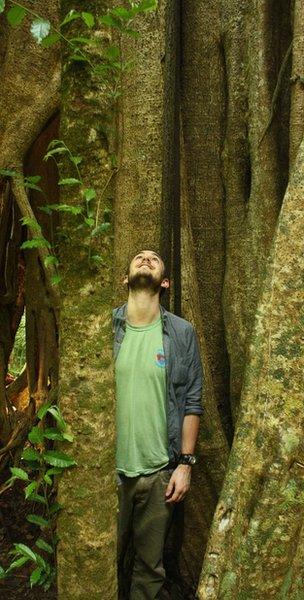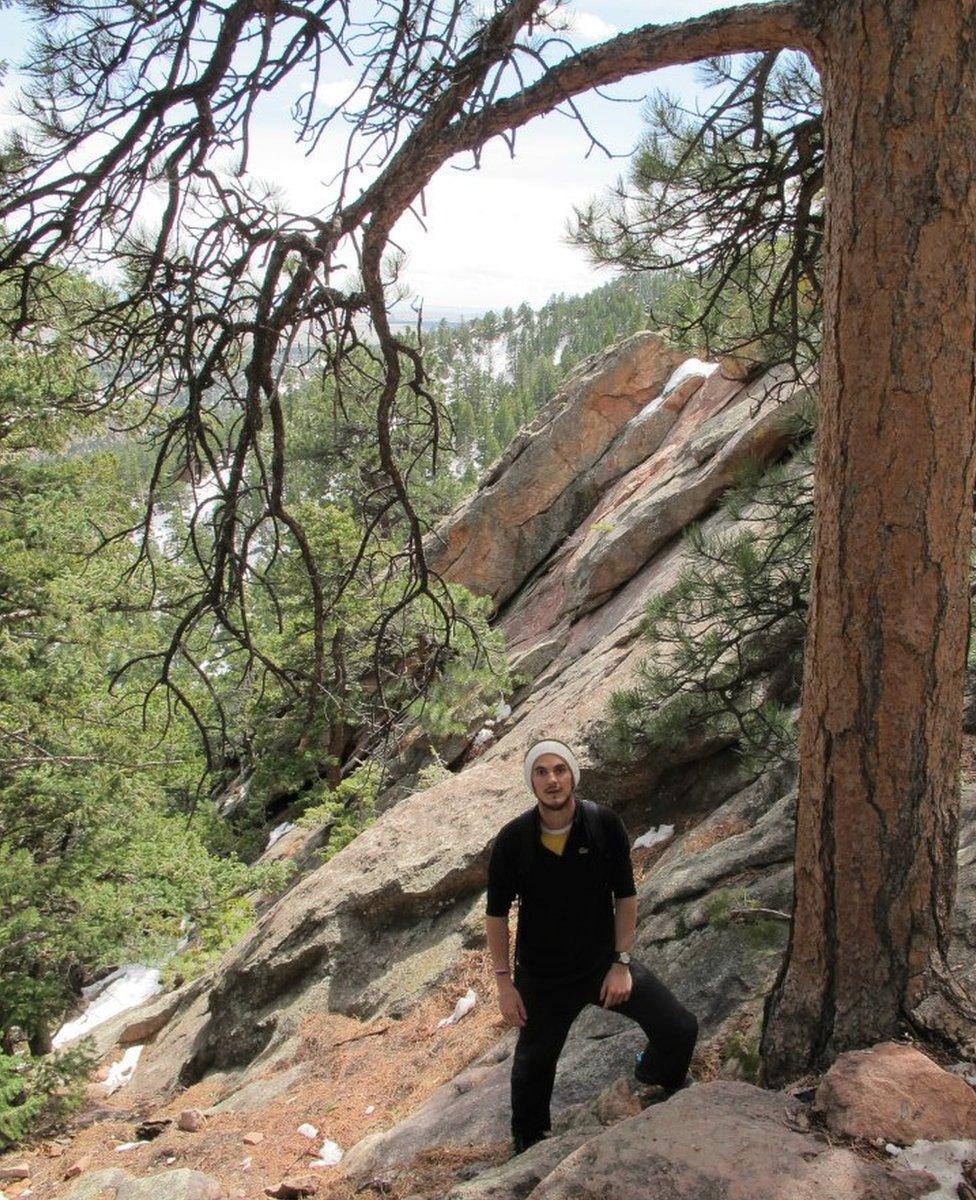COP21: 'A trillion trees to the rescue'
- Published

Tom Crowther garnered international interest in September when his group published an estimate for the number of trees on Planet Earth - 3,041,000,000,000. Here, the Yale University scientist explains how his team came to this figure and how it's being used.
Since we published the map of the world's trees, my colleagues and I have been bombarded with inquiries about the implications of this work. "It is interesting to know the number of trees in the world," people have told us, "but why is it useful?"
As the political world gears up for the final few days of COP21, I think that these are exactly the kinds of questions that people should be asking of scientists.

In the face of climate change - one of the most significant global threats to life as we know it - it is our duty as scientists to help environmental stewards and decision-makers by filling critical gaps in our knowledge.
Climate change is a complex, global issue, the consequences of which must be addressed across a multitude of political, societal, economic and scientific fronts.
However, in order to mitigate its effects, we are faced with one clear challenge: we must remove carbon from the atmosphere.
Starting point
Despite all of our best technological advances, it is nature that provides us with our single most effective weapons in this fight against rising CO2 concentrations. Trees absorb carbon directly from the atmosphere to be stored in their biomass and the soil.
Inspired by calls for action from the International Panel on Climate Change (IPCC), the United Nations Environment Programme (Unep) and Plant for the Planet, external designed the ambitious "Billion Tree Campaign".
By planting and restoring vast numbers of trees, they aimed to promote environmental stewardship and reduce atmospheric CO2 concentrations at a global scale.
The problem was that no-one had any idea how many trees there were to start with. Without a baseline understanding of the Earth's forests, it was difficult to comprehend the impacts of these restoration efforts.
Would a billion extra trees add 0.1%, 1% or 50% to the global number?
The global tree study was designed to address this critical knowledge gap.


Listen to Tom Crowther talk about the Yale study on Science In Action

By combining satellite technology with ground-sourced information collected by local forestry experts around the world, we generated the most detailed map of the world's forests to date.
It revealed that the Earth's forests are home to approximately 3.041 trillion trees, external.
By using strict criteria for the information that we include (e.g. using only trees with trunks equal to or larger than 10 cm diameter), and incorporating a huge amount of data into our predictive equations, the margin of error around this global estimate was exceptionally small (192 billion trees).
Although there are undoubtedly billions of trees living outside of the forested regions, their expected total number is likely to be insignificant at this scale, fitting within this margin of error.
This has placed the tree planting goals into a new context.
Fresh goal
One billion additional trees would only represent an increase of 0.03% on top of the current global number.
In addition, the study revealed that we lose approximately 10 billion trees each year, so even if the billion tree campaign was repeated annually, it would not get us much closer to the goal of halting the net global forest loss.
Instead of being discouraged by this news, Unep and Plant for the Planet have used this new information as the scientific basis to scale-up their efforts.
The new target is to restore one trillion trees, and work has begun in earnest - the total number of trees planted to date already exceeds 14 billion.
But the global tree map does not only tell us about tree numbers.
Carbon patterns
Tree density is an important feature of forest habitat structure.
It can therefore serve as a guideline to scientists who are interested in understanding patterns of biodiversity or nutrient processing.
The ultimate goal is to understand the role of forests as a store of carbon. To do this, we need to know about the number of trees but also the size of those trees.
The map of tree density represents a step in the right direction.
The next step is to generate a global map of the variation in tree sizes. When combined with information about tree numbers, this can reveal patterns of forest carbon storage, and help us to estimate how deforestation or reforestation might impact atmospheric CO2 concentrations and the climate.


UN climate conference 30 Nov - 11 Dec 2015

COP 21 - the 21st session of the Conference of the Parties - will see more than 190 nations gather in Paris to discuss a possible new global agreement on climate change, aimed at reducing greenhouse gas emissions to avoid the threat of dangerous warming due to human activities.
Explained: What is climate change?
In video: Why does the Paris conference matter?
Analysis: Latest from BBC environment correspondent Matt McGrath
In graphics: Climate change in six charts
More: BBC News climate change special report
